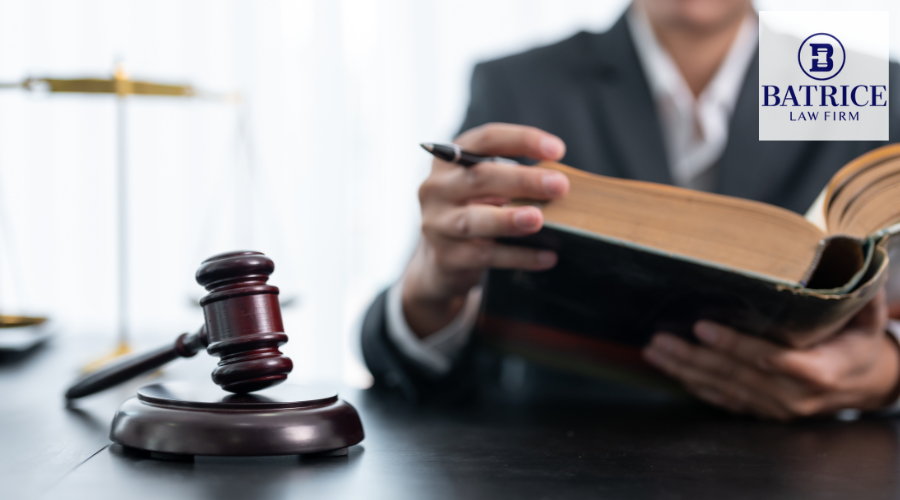The Gist: Austin residents who’ve suffered a personal injury need to take specific, time-sensitive actions to protect both their health and legal rights in Texas’s unique legal environment.
When accidents occur in Austin, your immediate actions can greatly affect both your recovery and your compensation. Prioritize safety and seek medical attention—even for seemingly minor injuries, as symptoms may appear later. Medical records also serve as vital evidence.
Report the incident to Austin authorities to create an official record, then document the scene thoroughly—take photos, gather witness contacts, and preserve any evidence. Finally, consult a skilled Austin personal injury attorney who understands Texas laws and can protect your rights when negotiating with insurance companies.
Key Highlights
- Move to a safe area immediately after injury, getting clear of traffic or hazards to prevent additional harm.
- Call 911 right away for emergency services—this creates an official record and ensures you get prompt medical attention.
- Stay at the scene until police arrive, as this complies with local regulations and helps preserve important evidence.
- Document everything you can—take photos of the scene, your injuries, and any contributing factors like weather conditions or hazards.
- Get medical evaluation promptly, even for seemingly minor injuries, as some conditions develop slowly and proper documentation strengthens any future claims.
Prioritizing Safety and Health
Quick Take: Immediate safety measures after injury prevent further harm while proper medical documentation builds your recovery foundation. Moving to safety, thorough injury assessment, and creating detailed medical records not only supports healing but strengthens potential legal claims if compensation becomes necessary.
After experiencing a personal injury, your immediate actions significantly impact both your physical recovery and legal options. Moving to a protected area away from additional hazards such as traffic, falling debris, or unstable structures creates a critical safety buffer that prevents your situation from deteriorating further. This protective measure allows you to stabilize and assess your condition without the compounding risk of secondary injuries that often prove more damaging than the initial incident.
As a result, conducting a thorough self-assessment becomes possible once safely positioned, allowing you to identify both obvious and subtle injury indicators. Many serious conditions—including internal bleeding, concussions, and spinal injuries—frequently present minimal early symptoms despite requiring urgent medical attention. That’s why medical professionals consistently recommend professional evaluation following accidents, regardless of how minor injuries may initially appear to the affected individual. Engaging an experienced Austin car accident lawyer can also provide vital support in navigating the complexities of your case.
Taking proactive steps after an injury protects both your health and legal interests through:
- Documenting the injury timeline with timestamps of medical visits, treatments received, and healthcare provider recommendations
- Creating a recovery journal tracking pain levels, mobility limitations, and how injuries affect daily activities
- Preserving all medical bills, prescription records, and insurance communications in chronological order
- Photographing visible injuries at various stages of healing to demonstrate impact
- Following treatment protocols precisely, which demonstrates your commitment to recovery
- Requesting written explanations when treatments change or additional specialists become involved
Your approach to post-injury care establishes the foundation for both physical healing and potential compensation. Medical documentation serves as objective evidence that connects the incident directly to your specific injuries, eliminating speculation about causation or severity. Remember that healthcare records become the authoritative narrative of your experience, telling the story that insurance adjusters and legal professionals will reference when determining the appropriate resolution to your situation. Additionally, engaging a personal injury attorney early on can significantly enhance your chances of receiving fair compensation for your injuries.
Contacting Authorities for Assistance
Quick Take: After ensuring immediate safety, promptly contact authorities like 911 to secure professional help and create an official accident record. This critical step ensures proper evidence collection, establishes documentation for insurance claims, and preserves your legal rights following a personal injury incident.
Reporting an accident to authorities creates a crucial foundation for any future proceedings related to your injury case. When you contact emergency services, you’re not only securing immediate medical attention but also initiating an official documentation process that serves as an objective account of what transpired. This documentation becomes invaluable when dealing with insurance companies that might otherwise challenge your version of events. Additionally, the information gathered during this process aids in establishing fault and liability for potential claims.
As a result, remaining at the scene until authorities arrive demonstrates compliance with legal requirements and strengthens your position. Law enforcement officers conduct systematic evidence collection, interview witnesses, and document conditions that may be impossible to recreate later. That’s why legal professionals consistently emphasize the importance of official police reports in establishing the timeline, determining fault, and substantiating the severity of injuries sustained.
The official report serves multiple critical functions in your injury case:
- Creates a legally recognized record with timestamp, location details, and preliminary assessment of fault
- Provides neutral third-party documentation of injuries, property damage, and environmental factors
- Establishes a foundation for insurance claims processing and can expedite approval processes
- Preserves witness information and statements while memories are fresh and accurate
- Helps prevent later disputes about the basic facts surrounding the incident
- May include officer observations about potential law violations that strengthen liability claims
Your actions immediately following an accident significantly impact your ability to receive fair compensation and necessary support. By promptly contacting authorities, you demonstrate responsibility while simultaneously protecting your interests. Remember that official documentation serves as a cornerstone of any successful injury claim, providing objective evidence that can counterbalance attempts to minimize your experience or diminish the compensation you rightfully deserve. It is also essential to consult with experienced personal injury lawyers who can guide you through the complexities of your case and advocate for your rights.
Gathering Evidence at the Scene
The Gist: Properly documenting a personal injury scene creates an unassailable foundation for your legal claim. From smartphone photos of hazards to witness statements, each piece of evidence serves as a crucial building block that strengthens your position, preserves critical details that fade with time, and significantly increases your chances of receiving fair compensation for your injuries.
When a personal injury occurs, the moments immediately following are critical for establishing what happened and who bears responsibility. The evidence available at the scene—visible hazards, environmental conditions, and physical indicators of negligence—begins to deteriorate or disappear almost immediately. That’s why systematic documentation becomes your most powerful ally in establishing the truth behind your injury claim.
As time passes, memories fade and physical evidence disappears, making contemporaneous documentation invaluable for demonstrating liability and substantiating your version of events. Without proper evidence collection, your claim may rest solely on contradicting testimonies, significantly weakening your position and potentially reducing compensation for medical bills, lost wages, and pain suffered.
Evidence that strengthens your personal injury claim includes:
- Time-stamped photographs showing hazardous conditions (broken pavement, wet floors, inadequate lighting) from multiple angles
- Contact information from neutral witnesses who observed the incident or conditions
- Environmental details like weather conditions, visibility issues, or maintenance deficiencies
- Documentation of any immediate injuries through photos before treatment alters their appearance
- Notes about nearby surveillance cameras that might have captured the incident
- Measurements or scale references showing the size of hazards that contributed to your injury
Your diligence in gathering evidence transforms an uphill legal battle into a straightforward path toward justice. Beyond simply supporting your claim, comprehensive evidence often accelerates settlement negotiations, as insurance companies and opposing parties recognize the strength of well-documented cases. Remember that every photo taken, witness secured, and detail recorded serves as an investment in your physical and financial recovery.
Documenting Injuries and Medical Care
The Gist: Properly documenting injuries and medical care creates a critical foundation for both your recovery and potential legal claims. Comprehensive records of medical visits, symptoms, treatments, and expenses serve as powerful evidence that can significantly strengthen your position when seeking fair compensation for personal injuries.
After experiencing a personal injury, the actions you take to document your condition can dramatically impact your ability to receive proper compensation. Thorough medical documentation establishes an objective timeline of your injury’s progression, treatment requirements, and overall impact on your daily life. As a result, insurance companies and legal professionals can more accurately assess the true value of your claim based on verifiable medical evidence rather than subjective accounts.
Over time, injuries may evolve in unexpected ways, making contemporaneous documentation invaluable for establishing causation between the incident and subsequent health issues. That’s why medical professionals consistently emphasize the importance of seeking immediate care following any accident or injury, even when symptoms initially seem minor or manageable. Your documented medical journey creates a narrative that connects your injury to the incident and demonstrates your commitment to recovery.
To build a compelling documentation portfolio, consider these essential practices:
- Create a dedicated injury journal tracking pain levels, mobility limitations, and emotional impacts on a daily basis
- Photograph visible injuries at regular intervals to demonstrate healing progression or complications
- Request and organize digital copies of all diagnostic imaging (X-rays, MRIs, CT scans) for easy reference
- Document work absences, modified duties, or productivity impacts directly resulting from your injury
- Maintain a medication log including prescriptions, over-the-counter remedies, and any side effects experienced
The documentation process serves as both protection and empowerment during what can be a challenging recovery journey. Medical records transform your personal experience into objective evidence that insurance adjusters and courts must acknowledge. By approaching injury documentation with diligence and attention to detail, you position yourself to receive the full compensation you deserve while creating accountability for those responsible for your injuries.
Consulting a Legal Professional
Quick Take: Navigating personal injury cases requires legal expertise to secure fair compensation. An experienced attorney helps Austin residents understand Texas law, manage complex insurance claims, meet the two-year filing deadline, and build strong cases—all while offering free consultations and contingency-based payment structures that eliminate upfront costs.
Confronting the aftermath of a personal injury often leaves victims feeling overwhelmed by medical bills, insurance paperwork, and unfamiliar legal procedures. An experienced personal injury attorney serves as both advocate and guide through this challenging process, leveraging specialized knowledge of Texas statutes to protect your interests when you’re most vulnerable. That’s why consulting with a legal professional immediately following an injury incident can dramatically improve your chances of receiving appropriate compensation.
As a result, many Austin residents find that professional legal representation makes the critical difference between inadequate settlements and comprehensive recovery packages. Personal injury attorneys understand the full scope of damages you may be entitled to—including future medical expenses, lost earning capacity, and non-economic impacts like pain and suffering—that insurance companies typically minimize or overlook. Over time, this expertise translates into significantly better outcomes for clients who might otherwise accept insufficient offers due to financial pressure or lack of legal knowledge.
Working with a personal injury attorney provides several distinct advantages:
- Access to investigative resources for gathering crucial evidence, including accident reconstruction experts and medical professionals who can testify about your injuries
- Protection from common insurance company tactics designed to devalue your claim or shift liability
- Strategic case preparation that anticipates defense arguments and builds compelling counterpoints
- Accurate valuation of your claim based on similar case outcomes and comprehensive damage assessment
- Representation through all phases—from initial filing through settlement negotiations or trial proceedings if necessary
The decision to secure legal representation often represents a turning point in personal injury cases. While insurance companies count on claimants’ inexperience and financial vulnerability to minimize payouts, attorneys level this uneven playing field. With contingency fee structures eliminating financial barriers to quality representation, there’s no practical reason to navigate this complex process alone. Remember that consulting with a personal injury lawyer doesn’t just protect your legal rights—it affirms your personal value and right to fair treatment within the justice system.
In Summary
Key Takeaway: Immediately after an injury in Austin, prioritize your health by seeking medical care, then document everything—photographs, witness information, and medical records. Report the incident properly, preserve evidence, and consult with a personal injury attorney who understands Texas laws to protect your rights during this vulnerable time.
The moments after a personal injury are crucial and can greatly affect your recovery and any legal action. Austin residents should document the incident, keep detailed medical records, and collect witness information. These steps are key in proving what happened and who’s responsible—especially if insurers try to dispute your claim.
Working with an experienced personal injury attorney in Austin, like Batrice Law Firm, can make a big difference. They can guide you through Texas laws, handle insurance companies, and protect your rights—so you can focus on healing while they handle the legal complexities.




